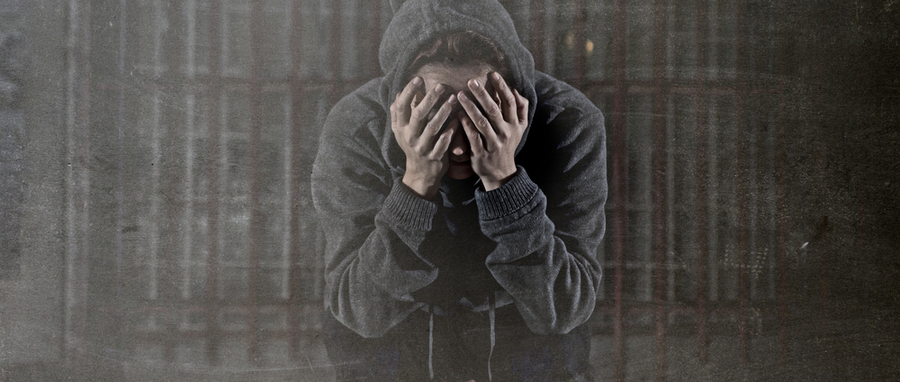HPPD (hallucinogen persisting perception disorder) is a condition characterized by seeing strange lights, patterns, or colors long after using drugs like LSD or magic mushrooms. Some people experience brief flashbacks while others experience ongoing visual changes that disrupt daily living. While these disturbances are not intrinsically harmful, they can trigger stress and anxiety, and they can be challenging to manage.
If you or someone you care about is dealing with HPPD, read on to learn more about this condition and how to manage it. You can also discover how to connect with effective treatment for addiction and mental health issues.
What is Hallucinogen-Persisting Perception Disorder?
Hallucinogen-persisting perception disorder—HPPD—is an uncommon condition that affects people who have used hallucinogenic drugs.1 They may continue to encounter visual disturbances, informally known as flashbacks, after the drugs have left their system. These flashbacks can happen suddenly and without warning.
People with HPPD experience visual effects like seeing trails behind moving objects, bright halos around lights, or strange patterns that aren’t there. Unlike full-blown hallucinations, HPPD only affects vision, not the other senses. The person knows these images aren’t real, but that doesn’t stop them from manifesting.
HPPD Definition
Hallucinogen persisting perception disorder definition: a mental health condition first described in DSM-IV2 that involves visual disturbances after taking hallucinogenic drugs. This class of drugs includes substances like:
- LSD (acid)
- Psilocybin (magic mushrooms)
- MDMA (molly or ecstasy)
- Peyote (mescaline)
- DMT (ayahuasca)
With HPPD, the person can experience visual effects similar to those of a drug trip.3
There are two types of HPPD:
- Type 1 HPPD: This type causes short and random flashbacks that come and go quickly.
- Type 2 HPPD: The more serious type involves ongoing visual changes enduring for months or years. The symptoms may come and go but never stop completely.
Unlike other disorders that provoke hallucinations, the person knows these disturbances are not real.
Causes of Hallucinogen Persisting Perception Disorder
The causes of hallucinogen persisting perception disorder are incompletely understood. That said, the use of hallucinogenic drugs is the primary driver.
Hallucinogens work by changing how the brain processes information4. They affect serotonin receptors in the brain, responsible for mood, perception, and cognition. When these receptors are overstimulated, it may provoke visual disturbances.
Some factors may increase a person’s risk profile for HPPD. These include:
- Frequent drug use: Using hallucinogens repeatedly raises the risk of HPPD.
- High doses: Taking large amounts of hallucinogens can lead to stronger and longer-lasting effects.
- Mixing drugs: Combining hallucinogens with other addictive substances can put someone at heightened risk of developing HPPD.
- Mental health issues: People with anxiety, depression, or other mental health disorders might be more likely to get hallucinogen persisting perception disorder.
- Family history: If someone in your family has mental health issues, your risk of running into problems may be higher.
Some people get HPPD after using hallucinogenic drugs just once, while others may use them for years without any symptoms. Researchers are still studying why this occurs.
Common Symptoms of HPPD
HPPD affects the way a person sees the world. The symptoms can be distressing and aggravating, interfering with daily life.
Short-Term Symptoms
The short-term symptoms associated with this condition are quick and random, lasting a few seconds to a few minutes and happening without warning. These include:
- Seeing halos around lights: Bright rings or glowing edges around lights, like street lamps or car headlights.
- Tracers or trails: When an object moves, a faint image of it may follow behind, like a streak or trail.
- Intensified colors: Colors appear much brighter or more vivid than normal.
- Flashes of light: Bright bursts of light may appear suddenly, even in a dark room.
- Geometric patterns: Seeing shapes or patterns like grids or dots on surfaces where they don’t exist.
- Visual snow: Tiny, grainy dots that resemble static on a TV screen.
- Size distortion: Objects appear larger or smaller than they are.
These short-term symptoms can be annoying and surprising but usually pass quickly.
Long-Term Symptoms
Long-term symptoms of HPPD can last for months or years. They may not subside, and they can be awkward to manage. Symptoms include:
- Ongoing visual disturbances: The visual effects never completely disappear. They may worsen during stressful situations or when the person is tired.
- Blurry vision: Difficulty focusing or seeing clearly.
- Persistent after-images: Seeing the image of something even after looking away.
- Feeling disconnected: Some people with HPPD feel like they are detached from reality. This is called depersonalization-derealization.
- Anxiety and depression: The stress of dealing with visual disturbance can lead to anxiety, depression, or panic attacks.
Long-term symptoms of HPPD can make it difficult for someone to concentrate on work, school, or everyday tasks. They can also adversely impact sleep and mental well-being.
HPPD Treatment Options
There is no cure for HPPD, but symptoms can be managed with evidence-based therapies. Hallucinogen persisting perception disorder treatment may include medications, therapy, and lifestyle changes.
Medications
The following medications may help reduce HPPD symptoms:
- Clonazepam: A benzo that calms the CNS (central nervous system) and helps with anxiety and visual disturbances.
- Lamotrigine: An anti-seizure medication that may help alleviate visual symptoms.
- Other options: Some doctors may prescribe naltrexone or beta-blockers to help manage HPPD symptoms.
Consult a healthcare provider before trying any medication as everyone’s experience with HPPD is different—what works for one person may not work for another.
Therapy
Talking to a therapist can help people cope with the stress and anxiety caused by HPPD. Types of therapy that can help include:
- CBT (cognitive behavioral therapy): CBT can help people change negative thought patterns and develop healthy coping skills.
- Mindfulness and relaxation techniques: Breathing exercises, meditation, and yoga may help reduce stress and anxiety.
Lifestyle changes
Simple changes to daily habits can help manage HPPD symptoms. These include:
- Staying sober: Avoiding all drugs, including marijuana and alcohol can prevent symptoms from worsening.
- Sleep: Getting enough sleep can help the brain function better and reduce stress.
- Exercise: Regular physical activity can boost mood and decrease anxiety.
- Stress management: Meditation, reading, or spending time in nature can help keep stress levels low.
- Eating well: A balanced diet can improve overall health and well-being.
Support groups
Joining a support group can help people with HPPD feel less alone. Sharing experiences and tips with others with lived experience of hallucinogen persisting perception disorder can make a major difference.
Hallucinogen Rehab in Orange County at Tree House Recovery
If you or someone you love is battling HPPD or hallucinogen use, professional intervention could make the difference between relapse and recovery. At Tree House Recovery in Orange County, we offer specialized programs to help men like you discontinue the use of hallucinogens and manage HPPD.
Our trained experts provide personalized treatment plans, counseling and therapy, and healthy living programs to help you kickstart your recovery. Speak to one of our friendly admissions specialists by calling (855) 202-2138.
Sources
- Hermle L, Simon M, Ruchsow M, Geppert M. Hallucinogen-persisting perception disorder. Ther Adv Psychopharmacol. 2012;2(5):199-205. doi:10.1177/2045125312451270
- Martinotti G, Santacroce R, Pettorruso M, et al. Hallucinogen Persisting Perception Disorder: Etiology, Clinical Features, and Therapeutic Perspectives. Brain Sci. 2018;8(3):47. doi:10.3390/brainsci8030047
- Orsolini L, Papanti GD, De Berardis D, et al. The “Endless Trip” among the NPS Users: Psychopathology and Psychopharmacology in the Hallucinogen-Persisting Perception Disorder. A Systematic Review. Front Psychiatry. 2017;8:240. doi:10.3389/fpsyt.2017.00240
- National Institutes of Health. How psychedelic drugs alter the brain. NIH Research Matters. Published April 9, 2024. Accessed June 13, 2025. https://www.nih.gov/news-events/nih-research-matters/how-psychedelic-drugs-alter-brain






